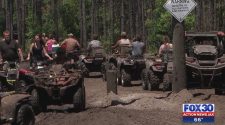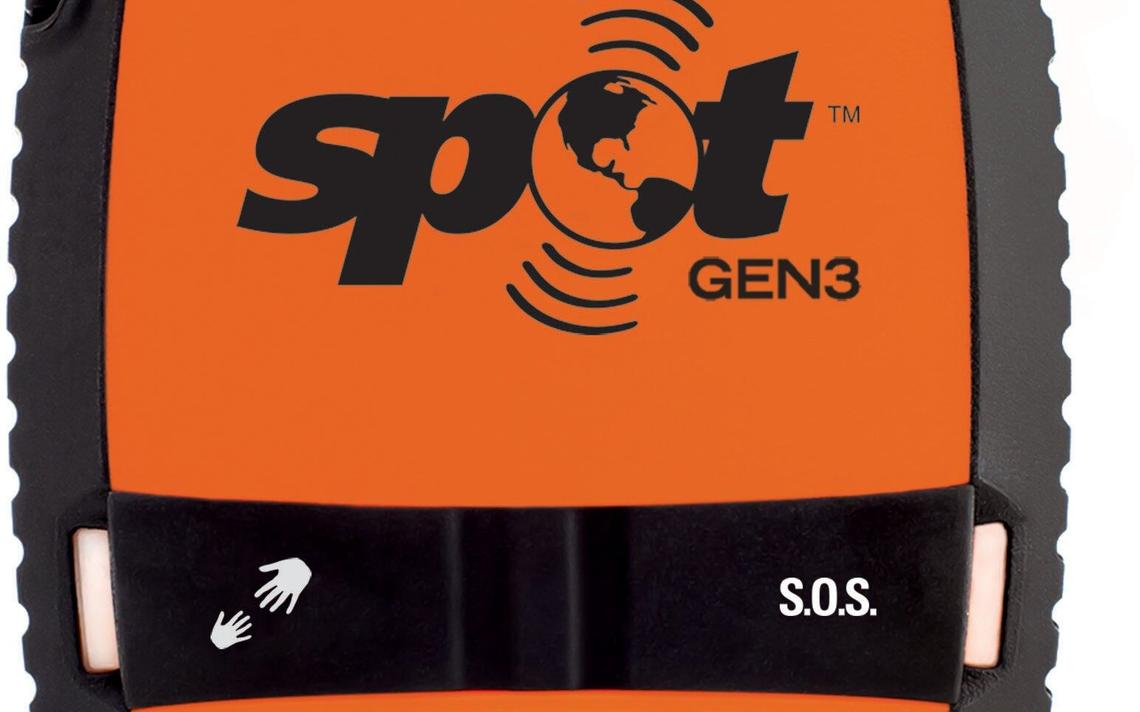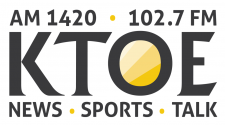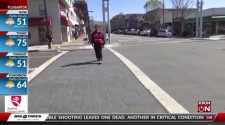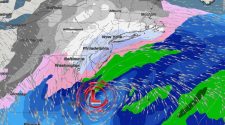Whether that’s always a good thing or not depends on who you talk to.
While wilderness experts caution against carrying the devices as an excuse to take unnecessary risks, like paddling alone into a snowstorm even as lakes are icing over, the devices are becoming a more widely accepted accessory in wilderness travel.
As reported Monday, on Oct. 17 a 34-year-old Elkhart, Indiana man used a Garmin SOS device to summon help after becoming soaked and cold while camping on Nina-Moose Lake off of the Echo Trail in the Boundary Waters Canoe Area Wilderness.
The Ely outfitter that rented the first-time BWCAW camper a canoe also talked him into taking the SOS device, for a $10 daily fee, considering bad weather was approaching and that cell phone coverage in the wilderness can be spotty or nonexistent.
The man had little food and inappropriate gear for the trip, and his rescuers — including the St. Louis County Sheriff’s Rescue Squad and Minnesota Department of Natural Resources Conservation Officer Sean Williams — said he was hypothermic and may not have survived much longer without help.

John Myers
“It was as dark as I’ve ever seen it out there,” Williams said. “You couldn’t see anything. It was snowing heavily, fog was moving in and there was ice on the lake. We had to break through ice to get to the middle of the lake, and when we made it to the middle it was so dark we had to use a GPS to find the shore and his campsite.”
When rescuers arrived at his campsite, a St. Louis County Rescue Squad member applied heat pads to the man’s core to begin warming him. Rescuers got him into warmer gear and built a fire, which he sat near for about 90 minutes while wrapped in a wool blanket. When the man was sufficiently warm, Williams noted, rescue personnel loaded him into the boat and headed back to their entry point. Other members of the rescue squad met them at the final portage and helped get the man out of the wilderness and to medical attention.
The man’s decision to accept the outfitter’s suggestion and rent emergency communications equipment likely saved his life, Williams said in a statement released by the DNR.
“Had we not gotten there when we did, I don’t know that he would have made it through the night,” Williams said. “Luckily, he had the communications equipment and wasn’t afraid to use it once he knew he was in trouble.”
Nearly the same thing happened again on Tuesday when a different solo camper was overwhelmed by wet and cold conditions and used the same kind of Garmin SOS device, from the same outfitter, to call for help. The man was paddling alone, camped on Lake One, which also was starting to ice over. The St. Louis County Rescue Squad responded and took the man out of the wilderness to safety. The outfitter will have to send a crew in to retrieve his equipment. (And again on Tuesday night, the rescue squad went into the BWCAW again to rescue a third ice-bound paddler on Muckwa Lake who used a cell phone to call for help.)
Better technology, cheaper
Duluth News Tribune photographer Steve Kuchera — a veteran of wilderness travel from canoeing the BWCAW to hiking the Bob Marshall Wilderness Area in Montana to scaling Denali in Alaska — says an SOS device helped him get out of the Quetico Provincial Park wilderness in 2014 after a medical emergency.
Kuchera, camping with his wife deep in the Ontario wilderness, suffered a severe leg break while carrying a canoe across a portage. He was unable to carry gear or even walk across the many portages along even the shortest route to get out of the wilderness and to medical help. But he could sit in a canoe. So he and his wife paddled to seek help from other campers. It took them two days to finally connect with another group that, by chance, was carrying a Spot Satellite Messenger device.
They used the device to call for help, and the Ontario Provincial Police flew to their location in a float plane and ferried him to a hospital. After that incident the Kucheras purchased their own device, an InReach, to carry along on their wilderness trips.
Satellite devices range in capabilities from simply sending a non-detailed distress signal, to tracking your actual location and sending detailed text messages, to a full-service satellite phone that allows two-way voice communication with anyone in the world who has a phone.
They range in price from about $150 for a basic Spot Gen 3 Global Satellite Tracker and Messenger to $350 for the Garmin inReach Explorer + Satellite Communicator GPS device to $1,150 for the Iridium Extreme 9575 Satellite Phone. In addition to the up-front cost to purchase the units, most require a monthly subscription service fee, just like your cell phone provider. Those can be as little as $11.95 per month for the most basic devices to $110 a month for high-minute satellite telephone monthly service fees.
Longtime Ely Outfitter Steve Piragis said the devices are getting more popular among his clients. His staff said most of their units are booked all summer.
“With more and more paddlers out with such devices, and sat phones, which we also rent, comes the possibility that they can be used in less than an emergency for a convenience rescue. That possibility is enhanced by the influx of newbies to the wilderness this year,” Piragis noted. “So far it’s not out of hand. But there have been some instances where a rescue would not have happened and the situation could have been remedied without calling for the rescue squad. Thankfully we still have a great squad of volunteers but they may burn out if it got worse. “
Some wilderness experts say the happy ending for the Indiana man may mask a more important take-away message from the incident: Is technology emboldening unprepared people into taking unnecessary risks? In wild areas, self-sufficiency can’t just be the goal, it has to be the rule. What if the SOS unit had malfunctioned? What if the man had been too hypothermic to operate it? Nothing can replace being properly prepared. Nothing is safer than knowing when not to go.
Spurring overconfidence?
Ken Gilbertson, professor of environmental and outdoor education at the University of Minnesota Duluth who has been guiding and teaching wilderness travel for 50 years — including instructing wilderness rescue courses — said a long-raging debate continues over how much communication may be too much in wilderness areas. That debate renews every time emergency communication technology improves, he noted, first when cell phone towers were erected near wilderness areas and now with inexpensive satellite devices readily available.
“Some people would say this (latest BWCAW rescue) shows exactly why we need communication in the wilderness. The device worked. He used it. He survived,’’ Gilbertson said. “But there’s another view that says this shows exactly why we shouldn’t fall back on technology to save us, that people who are unprepared for wilderness travel maybe shouldn’t be there.”
The debate isn’t just around the BWCAW, but surfaces as more inexperienced adventure seekers try to scale famous mountain summits.
“There’s a huge argument going on in the wilderness education and wilderness travel professions over how many people are climbing Everest and Denali now and who expect, at the push of a button, to be plucked off the mountain if anything goes wrong,’’ Gilbertson said. “Adding this layer of technology really gets to the heart of the question of why we go into wilderness in the first place.”
In some areas, the devices are required by the managing natural resource agencies for any groups venturing out. But the technology shouldn’t be used as a substitute for experience, common sense and wilderness values, Gilbertson noted, citing a case earlier this year when inexperienced BWCAW campers used a cell phone to summon help.
“It turned out they weren’t really in any distress or danger. They just got themselves into an area where they didn’t feel like paddling out. So the rescue squad went in to find them and here they were sitting in another group’s campsite waiting to be taken out,’’ Gilbertson noted. “They left all their gear behind.”
The problem of inexperienced people going beyond their capabilities into wild areas has amplified during the COVID-19 pandemic, just as Gilbertson predicted in a July News Tribune article, as more people seek outdoor refuge.
In the end, Gilbertson noted, because it’s impossible to stop people from making bad decisions, the question may be moot. But it’s still worth raising.
“This isn’t just a philosophical question. It’s a real question… The biggest concern here is with the rescuers. These calls are pulling (rescuers) away from other emergencies. It’s putting them in danger. And it’s costing taxpayers a lot of money,’’ Gilbertson noted. “What if one of the rescue squad had tipped in that icy water, in the dark? This could have been a far different story then.”


